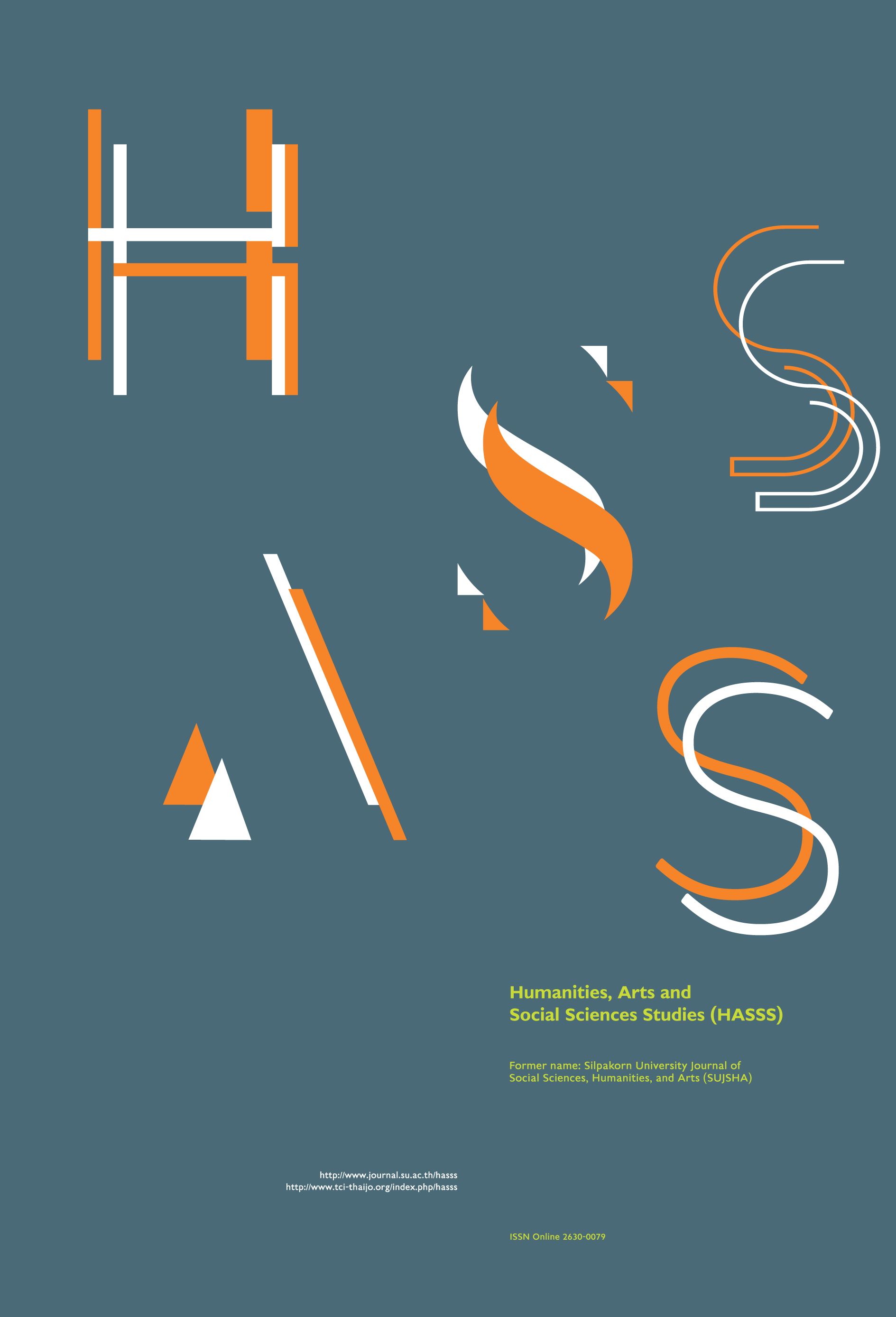The ghost-like zombies and their metaphorical reading in Phi Ha Ayothaya/The Black Death (2015)
Main Article Content
Abstract
Phi Ha Ayothaya/The Black Death (2015) is one of a few serious Thai zombie films which have been released theatrically. To make the Western zombies palatable to the Thai audience that is attracted to the ghost film, a popular genre in Thailand, the film, as this paper will show, employs strategies to create ghost-like zombies. This paper, firstly, aims to illustrate these strategies by the way in which the zombies are referred to as phi ha, a type of Thai folkloric ghost, and the way in which the zombies behave. The cultural beliefs associated with ghosts or ghost stories are also exploited to “ghostify” the zombies in the film, making the film closer to a ghost film. The ghost-like zombies, however, remain foreign monsters. The foreignness with which they are associated leads to another argument of this paper involving the metaphorical reading of these ghost-like zombies. They, similar to the zombies in many Thai zombie films, are a metaphor for corrupting foreign influences. These influences are destructive to the traditional values, religion and its teaching on impermanence. In addition, individuals are also corrupted by foreign influences as this is metaphorically represented by the character bitten and killed by a zombie having been infected with the foreign virus.
Downloads
Article Details
All rights reserved. Apart from citations for the purposes of research, private study, or criticism and review,no part of this publication may be reproduced, stored or transmitted in any other form without prior written permission by the publisher.
References
Ancuta, K. (2016). The Smiling Dead; or, on the Empirical Impossibility of Thai Zombies. In Vampires and Zombies: Transcultural Migrations and Transnational Interpretations, edited by D. Fischer-Hornung and M. Mueller, pp. 21-42. Mississippi: University Press of Mississippi.
Bishop, K. W. (2009). Dead Man Still Walking: A Critical Investigation into the Rise and Fall… and Rise of Zombie Cinema. Doctoral Thesis. The University of Arizona, USA.
BK Staff. (2016). The BK Film Awards 2016. [Online URL: https://bk.asia-city.com/movies/news/bk-film-awards-2016-best-thai-cinema] accessed on November 5, 2019.
Dendle, P. (2001). The Zombie Movie Encyclopedia. North Carolina: McFarland & Co.
Kosolkarn, K. (2015). Phi Ha Ayothaya: The Creativity of the Undead. [Online URL: http://www.tcdc.or.th/
articles/others/21913] accessed on November 10, 2019.
Lee, J. E. (2010). Monsters in Contemporary Thai Horror Film: Image, Representation and Meaning. Doctoral Thesis, Chulalongkorn University, Bangkok, Thailand.
Major Cineplex. (2015). Phi Ha Facts. [Online URL: https://www.majorcineplex.com/news/phee-ha-facts] accessed on October 10, 2020.
McDaniel, J. T. (2012). Encountering Corpses: Notes on Zombies and the Living Dead in Buddhist Southeast Asia. Kyoto Review of Southeast Asia 12. [Online URL: https://kyotoreview.org/issue12/encountering-corpses-notes-on-zombies-and-the-living-dead-in-buddhist-southeast-asia/] accessed on November 1, 2019.
Mogk, M. (2011). Everything You Ever Wanted to Know About Zombies. New York: Gallery Books.
Moreman, C. M. (2018). Dharma of the Dead: Zombies, Mortality and Buddhist Philosophy. North Carolina: McFarland.
Prasartthai, C. (2016). Reading Thai Society and Politics through Zombies in Thai Films and Other Media. Master’s Thesis. Thammasart University, Thailand.
Royal Institute Thailand. (2011). Royal Institute’s Dictionary B.E. 2554. Bangkok: Nanmeebooks. [in Thai]
SILPA-MAG.COM. (2020). 3 Plagues in Siam: Cholera, Smallpox, Black Death. [Online URL: https://www.silpa-mag.com/history/article_24493] accessed on January 30, 2020. [in Thai]
Streiner, R. W. and Hardman, K. (Producers), Romero, G. A. (Director). (1968). Night of the Living Dead [Motion Picture]. United States: Image Ten.
Wise Kwai. (2016). Snapshots and ZOMBIES. [Online URL: https://www.nationthailand.com/life/30276335] accessed on December 2, 2019.


